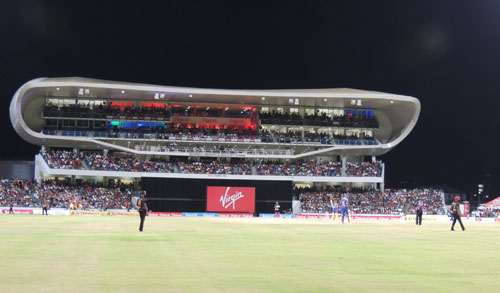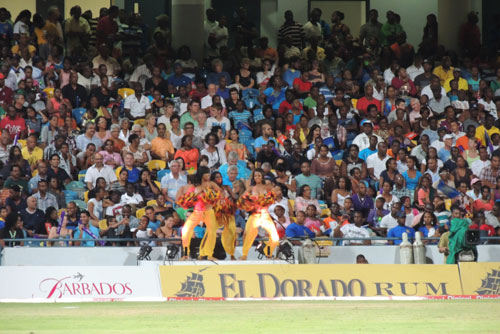
Twenty20 cricket has a special appeal to West Indies cricket because it combines entertainment with party and nowhere in the world is that more appreciated than in the islands. Fifty years ago it was called calypso cricket, the beautiful blend of entertainment on the field with uninhibited music, dancing and celebration off it. Traditionalists were reluctant to embrace the change, but very quickly the popular phenomenon of One-Day cricket hit the world stage. The game has moved on since those halcyon days of Sobers, Richards, and Lloyd, but after two decades of dominance, test cricket in the West Indies has slumped since the Mid-Nineties. Even One-Day cricket struggled to capture the enthusiasm of spectators and more and more demand was placed on shorter matches and entertainment off the field. The Stanford Twenty20 offered the West Indies a resurgence of interest and mega bucks for the players as prize money, but it had barely got off the ground when the Texas billionaire was exposed as a fraudster and virtually overnight all the positives were replaced by despondency and huge disappointment.

Elsewhere the IPL in India showed what could be achieved and ironically some of its leading stars were Caribbean cricketers. Chris Gayle, Dwayne Bravo and Kieron Pollard led the circus and many people in their homeland bemoaned the lost opportunity.
Then enter Ajmal Khan the Chairman and Chief Executive of Verus International and the birth of the Limacol Caribbean Premier League (CPL).
There is little doubt the CPL exceeded everyone’s imagination in its inaugural year and the sell out crowds at virtually every venue last August confirmed the cricket cuisine was to everyone’s taste. And little wonder, because the organizers went to great pains to remove any doubters by including many of the former West Indian legends, some in key administrative positions despite dubious qualifications. But that was a huge part of the genius of this promotion as sponsors, governments, tourism chiefs, commentators and cricket administrators bought into the concept and rallied round for the common good. The biggest part of this promotion was its ability to mobilize and execute a phenomenal series of promotions across the region without the constraints of cricket bureaucracy, a malaise that has curtailed West Indian cricket growth for several decades.
But the Vote of Approval for CPL cricket didn’t come from the sponsors, the players, the legends, the commentators or the tourism chiefs, it came from the fans who flocked in thousands to watch the games. Each promotion was packed with entertainment, fireworks, dancing girls, cheerleaders, and excellent television coverage. Each result had a bearing on the tournament and interest was maintained right to the final.

The CPL is innovative and visionary, not least in the composition of the teams, which have a national culture, but are franchises rather than national teams. Many sceptics said it wouldn’t work in a region where sovereignty issues are strong, and the idea of a non-national captaining an island team was almost unthinkable. But it did work, and after a few matches the fans warmed to the concept and the opportunity to enjoy something different. The top West Indian players were spread around the teams and the overseas players provided the glamour and excitement that raised the bar of expectation. They included the great Australian batsman Ricky Ponting in his last major tournament and what a way to go out.
Twenty20 cricket works for a variety of reasons. It appeals to cricket fans as it features all the top players, it appeals to non-cricket fans because it is short, instant and exciting, and it appeals to the players because there is huge money at stake. It appeals to sponsors because it is a great platform to promote their brand or their product. After all, how well known was Limacol before last year’s tournament?
The organizers also added some innovations with Man-of-the-Match Awards supplemented with Catch-of-the-Match Awards, Super Six Awards for the longest hit and the Virgin Atlantic Challenge for batsmen to hit their huge balloon and win travel for two around the globe. In total the prize money was a whopping US$800,000 and great remuneration for everyone involved.
The biggest challenge going forward will be to improve and better last year, but judging by the enthusiasm and frenzy it generated in its inaugural year, it doesn’t have to change much to be another rousing success.
PS - In the final at the Queen’s Park Oval Jamaica Tallawahs beat Guyana Amazon Warriors by 7 wickets with Captain Chris Gayle (47no) the Man-of-the-Match.
Clarence Hiles
Editor








